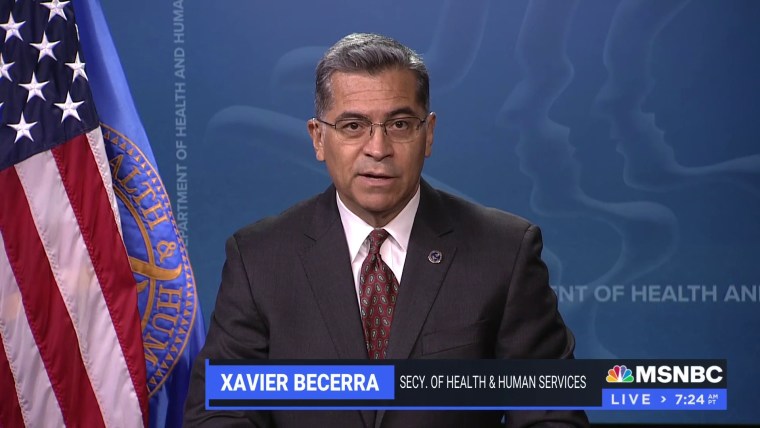The 988 Suicide & Crisis Lifeline number, a new national mental health hotline, has been criticized on social media since its launch earlier this month as being too closely tied to the 911 system it’s supposed to be an alternative to, with some mental health activists discouraging people from calling it.
In viral posts that have received hundreds of thousands of impressions in the past two weeks, critics on Twitter and Instagram have said that calling 988 — which replaced the National Suicide Hotline — could lead to intervention by authorities, nonconsensual treatments and become an invasion of privacy.
However, mental health advocates and government officials say that much of the skepticism is caused by misinformation. The line, for instance, can’t track a caller’s exact location. And only a small proportion of calls end up being referred to law enforcement.
John Draper, the executive director of the 988 hotline, called the criticism “an artifact of many, many years of earned suspicion” for mistreating public health crises as public safety ones. “That’s really what 988 was designed to shift,” he said.
The hope is that the new three-digit Lifeline number will be easier to remember in times of crisis than the 10-digit National Suicide Prevention Lifeline and that it will provide a response from qualified mental health professionals, rather than the law enforcement or emergency services response of 911 calls.
Fewer than 2% of calls to Lifeline lead to a 911 referral from the person who receives the call and fewer than half of the referrals to emergency services are done without the caller’s consent, said Draper and officials at the Department of Health and Human Services’ Substance Abuse and Mental Health Services Administration, or SAMHSA. That calculation includes calls to 988 and the 1-800 number. As of now, its system is unable to distinguish between the two.
“There are some cases, about 2% of the time, where the person is at such high risk by the end of the call, that we believe there’s a possibility, even a probability, that they’re going to die if we don’t do anything,” Draper said. “Typically it’s because the person says, ‘Yes, please call 911’ or ‘Help me call 911 because I’m going to die.’”
Up to 80% of calls, chats or texts are resolved through the initial contact, a SAMHSA official said. The others typically receive assistance from mobile crisis services — mental health units designed to meet with people and de-escalate a crisis — and other local assistance.
Misty Vaughn Allen, whose tenure as Nevada’s suicide prevention coordinator has been celebrated nationally for bringing down the suicide rate in her state, said that she continues to work with law enforcement on crisis intervention and suicide prevention training and response, but emphasized that “the whole point of 988 is to pull away from 911.”
“I haven’t called first response in years because I believe listening and keeping people out of an emergency department is the best response, especially if we can help them find that support system and safety plan,” she said.
Still, there is concern that not enough infrastructure exists to support the country’s mental health needs without triggering a response from emergency personnel, forcing people to an emergency room or a treatment facility.
One critical Instagram post that received nearly 250,000 likes says “988 is not friendly. Don’t call it, don’t post it, don’t share it, without knowing the risks,” which were listed as “police involvement, humiliating involuntary treatment at emergency rooms and psych hospitals, use of medical violence to punish ‘uncooperative’ or distressed patients, forced drugging, crushing medical debt, and life-altering trauma.”
The post was made by Liz Winston, a peer support counselor in New York City, who said that she had found a call to the Suicide Hotline that preceded 988 unhelpful and impersonal when she tried to use it in 2014. She said she also voluntarily sought help at an emergency room during a mental health crisis and did not receive help. Instead she said she experienced trauma and was given a $6,000 bill.
“I’ll be perfectly frank with you: I don’t think people should call 988 unless they are fully prepared to be hospitalized and if they know what a psychiatric hospitalization looks like,” she said.
Winston said her perspective on 988 would change only if mental hygiene laws, which allow involuntary admission to psychiatric centers in some instances, were amended. She said she found it very difficult to trust the program when she and others had been failed during mental health crises before.
The concern around 988 is not a black-and-white issue, said Craig Bryan, the director of the suicide prevention program at the Ohio State University Wexner Medical Center, but treating it that way on social media “makes it really hard for people to weigh the pros and cons.”
“It’s not exactly a place where nuance and the gray area in between the extremes are readily discussed,” he said.
Still, even low rates of intervention — such as the 2% figure — are an issue, said Emily Krebs, a Fordham University assistant professor who studies suicide and shared criticism of 988 on Twitter.
“More studies show that the risk of suicide attempts and death is higher after getting that nonconsensual care,” they said by phone. “So we might be stopping a crisis in a moment, but we’re not fixing an issue.”
Another issue, Krebs said, is privacy. Many worry that the 988 system could geolocate a caller, a power the line doesn’t currently have — though 911 does. A SAMHSA official said, however, that the Federal Communications Commission has pulled together a panel of stakeholders to discuss whether to allow 988 to have some form of geolocation.
The FCC is still deliberating, the official added.
Geolocation would ensure that the correct, local services could be more easily connected to callers, Draper said. While an exact location isn’t necessary, anything would be an upgrade of the current system that links callers to services via their area code, which increasingly does not accurately reflect a person’s actual location because of the growth of mobile phones.
Both Bryan and Krebs suggested that one fix might be to have callers screened and allow them to choose whether to share their location and be connected to a local call center.
Officials emphasized that 988 is just a first step and there are further plans to expand to create a continuum of care outside of current emergency services, but Krebs and Winston said the hotline seemed to have launched before all the necessary infrastructure was in place.
In 2020, bipartisan legislation in Congress mandated the launch of the 988 emergency number, but it left its financial support for infrastructure up to the states. That’s led to a patchwork system.
Krebs said further transparency and communication about what is planned would help to build expectations and share insight into the program.
“What I fear we’re slipping into is what all politicians get mocked for, which is this promise of hope and change and doing better without a clear plan on how it’s going to happen,” they said. “I’m sure that that plan exists. I’m sure that HHS and SAMHSA are actively working on this. But being more transparent about it and being clear with the public would be a huge step.”
Draper said there is a plan in place, but it will take time and more funding in every state across the country to get there. There are not enough alternatives to emergency services at the moment because the 911 system is so huge, but he said he remains committed to ensuring that 988 has “a continuum of care” that matches 911.
“This is the front door to a transformational moment in behavioral health care for the country. That’s going to take some time to develop,” he said. “But what we’re seeing is a huge level of stakeholder engagement, investment and interest in building that out.”
Source: | This article originally belongs to Nbcnews.com












